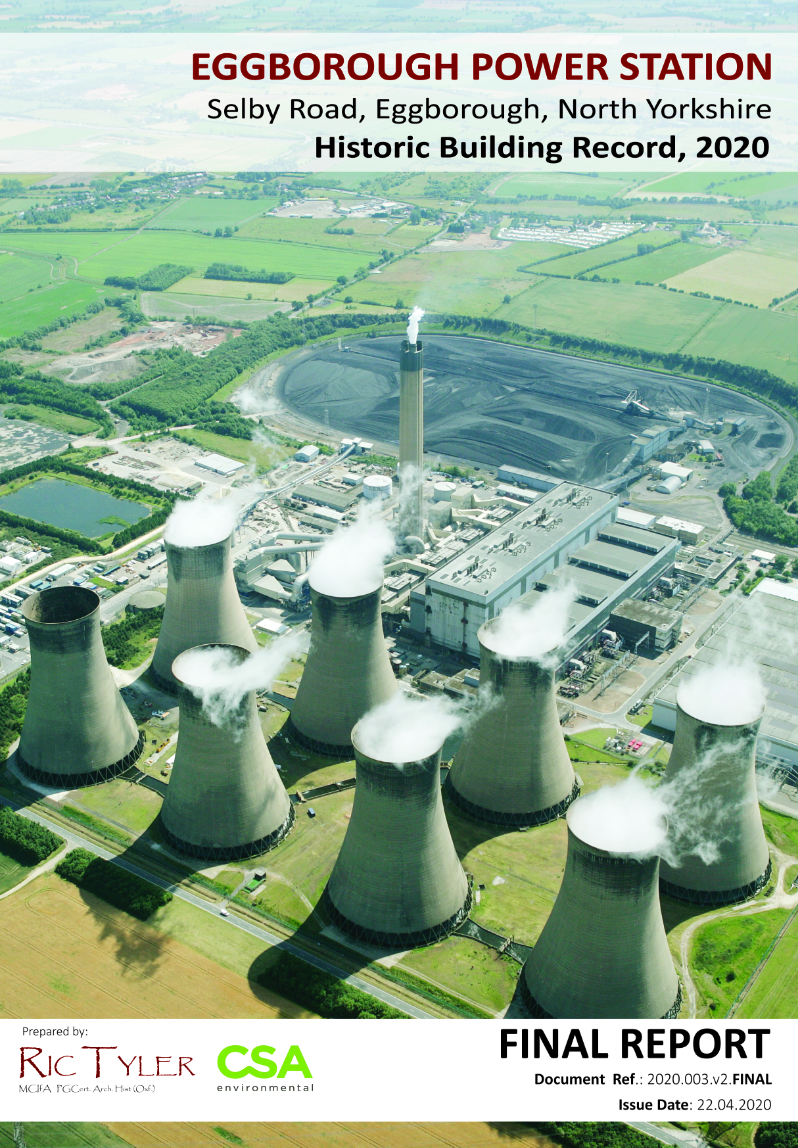



Project Name: 1960s coal-fried power stations
Client: Uniper, EDF, RPL/Engie, St. Francis Group
Project type: Historic Building Record
Project No.: 2017.003; 2018.002a; 2018.002b; 2018.006; 2020.003; 2023.004
Date: 2017-2024
With the closure of Ratcliffe-on-Soar power station in Nottinghamshire at the end of September 2024, for the first time since the opening of Holborn Junction power station (the Edison Electric Light Station) in London in 1882, the UK has no coal-fired capacity, marking the end of a 142-year long era in the history of national electricity generation.
Ratcliffe was one of ten coal-fired stations based around the 500MW turbo-generator unit, the largest then available, released for construction by the Central Electricity Generating Board (CEGB) between 1960-64 as part of a bold, post-war expansion of electricity generation at a national scale. This group of stations, known colloquially as ‘Hinton’s Heavies’ after Sir Christopher Hinton the CEGB chairman who oversaw their introduction, have formed the backbone of the UK’s electricity generation capacity for a period of 50 years. Their monumental buildings, in particular their groupings of ‘iconic’ cooling towers, have become established as dominant features within their often rural landscape settings. In response to increasing awareness and concern regarding anthropogenic climate change, however, government policy has shifted away from fossil fuels, and the 1960s coal-fired stations have been sequentially shut down and decommissioned, with demolition their ultimate fate.
For more than a decade, Historic England (HE) have highlighted the heritage significance of these coal-fired plants, identifying them as an important class of industrial heritage asset, ‘highly threatened and increasingly rare’, though seldom benefitting from any degree of statutory protection. Thematic overviews and detailed, ‘best practice’ guidelines for recording and documentation were published in 2013 and 2016 respectively.
In line with published guidelines, over the past seven years full historic building records have been completed at six broadly contemporary stations viz. Ironbridge ‘B’ in Shropshire (for Uniper UK), West Burton ‘A’ and Cottam in Nottinghamshire (for EDF), Rugeley ‘B’ in Staffordshire (for RPL/Engie), Eggborough in North Yorkshire (for St Francis Group) and, most recently, at Ratcliffe on Soar in Nottinghamshire (for Uniper UK). Links to public domain reports are available here.
Recording projects have combined on-site inspection and ‘point in time’ photographic survey with documentary research at the National and County Archives, enhanced greatly by comprehensive CEGB archives held at individual plants. The latter included many thousands of original and subsequent design drawings, station manuals and handbooks, and historical photographs of the construction process. Resultant reports have sought to distill down this mass of primary material for individual sites, in combination with contemporary records, into a readable and accessible format, creating a ‘preservation by record’ of the sites concerned together with a summary of their historical development and evolution. As a corpus, the site reports contribute significantly to a growing body of data on power stations of the era, building towards a broader overview and understanding of the 500MW-unit programme as a whole.
The report on Ironbridge ‘B’ power station received the Association for Industrial Archaeology (AIA) Archaeological Report (Funded Projects) Award in 2018 and has been used by HE as an ‘exemplar’ in terms of what can be achieved through such recording actions in respect of heritage assets of this type.





